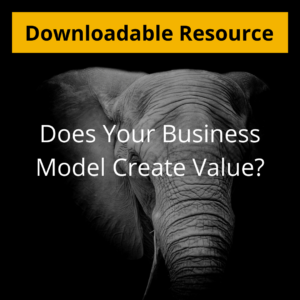Every industry relies on specific business models to meet organisational goals. Whether a business aims to create value, provide solutions to customers, or scale, it is vital that the right business model is selected if it is to thrive and succeed.
For a business to improve its odds of success, business executives must have these fundamentals:
- an understanding of their customers’ problems
- an identified set of solutions to these problems
- a market opportunity
- a profitable business model
What is a Business Model?
A business model is “the rationale of how an organisation creates, delivers and captures value.” It is the powerful strategic foundation that allows a business to monetise its products and services.
A business model can also be seen as an adjustable framework that is conceptualised based on changes in consumer buying behaviour, company goals, and the market, among other integral factors.
Elements of a Business Model
As the blueprint to organisational success, a business model should take into account the following elements:
- customer needs
- consumer buying behaviour
- market opportunities and competition
- value proposition
- monetisation potential and revenue
- alignment with company goals and vision
Thus, when developing a profitable business model, it is important that an in-depth analysis of all these elements is carried out as this will help you establish plans and strategies to effectively realise your business vision and objectives.
How Do You Select the Best Business Model for Your Organisation?
1. Identify your customer needs
When developing a business model, you need to align the model to your customer’s needs. A leading driver of any business is a strong focus on customer requirements and experiences, and not just on profit-generation.
The main reason for a business’ existence is to provide solutions and value to customers. Thus, investing more in improving customer experiences and understanding their wants is key to a business model’s success.
2. Determine how your customers buy
In this ever-changing market, customers’ buying behaviour is also changing. It is important to study the behaviour of your customers and whether they often make high-end purchases or whether they regularly purchase low-end products.
3. Assess market potential and competition
Conduct research on marketplace trends and factors to determine your product’s potential and forecast your business’ ability to compete in the market. Consider identifying the successful businesses that have been quiet for a while. Then, study the business models that they have been using to identify which are effective.
By doing this, business leaders can get an idea of how to develop a business model that is somewhat similar to theirs and test its effectiveness.
4. Determine the value proposition
A value proposition serves as the business’ promise to the customer in terms of the usefulness and benefits of its products, services or offerings.
Identifying the value that your business provides in the market is important as this will give you an idea of whether the value that you provide helps the business stand out in the market or not.
5. Diversify your revenue streams
Most successful businesses don’t rely on a single revenue stream. Doing so limits a business’ profit and does not provide the required protection against losses during slow seasons. Thus, diversification or venturing into multiple revenue streams that can boost a business’ income and cash flow is a good idea.
A powerful business model is the backbone of any successful business. Creating a profitable business model is imperative to reaching organisational goals. So, it is crucial to research and ensure that the model that your business designs and employs is compatible with your organisation’s vision and targets.

